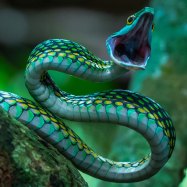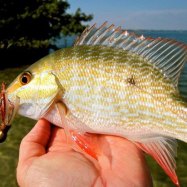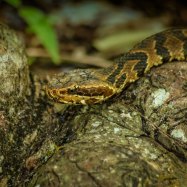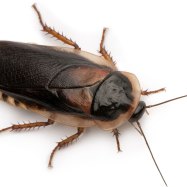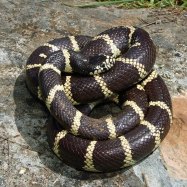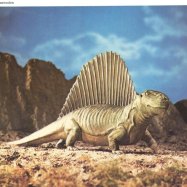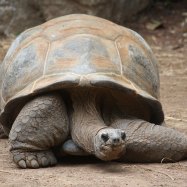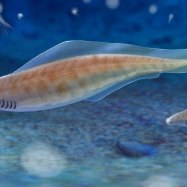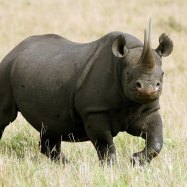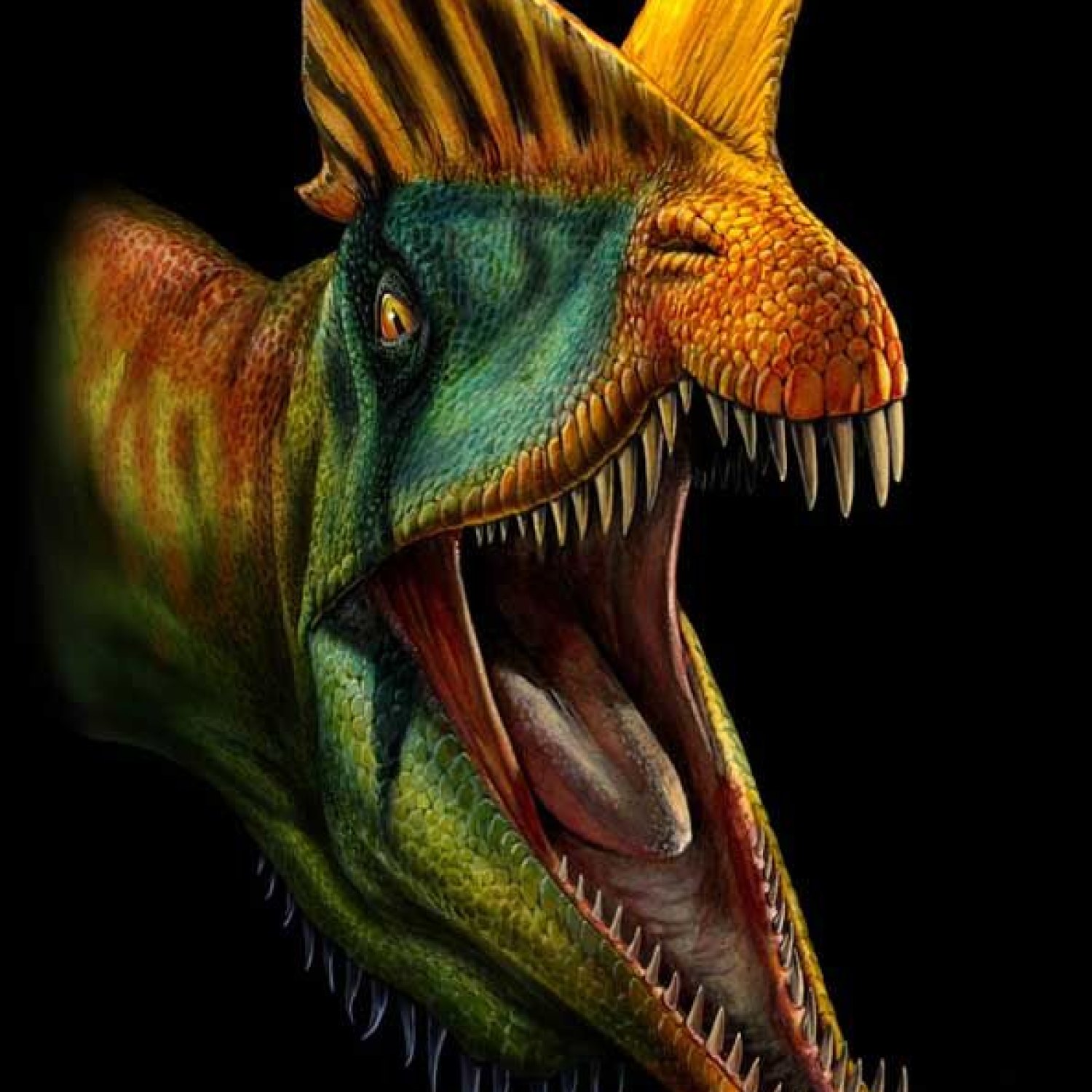
Dilophosaurus
Up to 20 feet
Dilophosaurus, a fierce and agile predator, roamed the arid landscapes of Arizona and Utah millions of years ago. With its distinctive double crest on its head, this dinosaur could reach up to 20 feet in length. Belonging to the family Dilophosauridae, its slender, bipedal body shape and sharp claws made it a formidable hunter in its environment.
Animal Details Summary:
Common Name: Dilophosaurus
Kingdom: Animalia
Habitat: Terrestrial
The Fascinating Dilophosaurus: A Predator of the Jurassic Era
The world of dinosaurs is one that never fails to captivate and intrigue us. From the towering Tyrannosaurus Rex to the gentle Brachiosaurus, these creatures from the prehistoric times have always left us in awe. Among these magnificent creatures is one that may not be as well-known as its counterparts but is equally fascinating - the Dilophosaurus.Scientifically known as Dilophosaurus, this fascinating dinosaur lived during the early Jurassic period, approximately 193 million years ago Dilophosaurus. Its name comes from the Greek words "di" meaning "two," "lopho" meaning "crests," and "saurus" meaning "lizard," referring to the two distinctive crests on its head. This unique feature, coupled with its other physical and behavioral characteristics, make Dilophosaurus a truly intriguing subject of study for both paleontologists and enthusiasts.
Classification and Habitat
Dilophosaurus belongs to the Animalia kingdom, the Chordata phylum, and the Reptilia class. It is classified under the order Saurischia and the family Dilophosauridae. This classification places it within the group of theropod dinosaurs, meaning it was a bipedal carnivore with hollow bones and three-toed feet.Dilophosaurus was primarily a terrestrial animal, inhabiting the lush forests of North America during the Jurassic period. Its fossils have been found in the states of Arizona and Utah in the United States. The discovery of Dilophosaurus fossils in these regions has given us valuable insights into the behavior, physical characteristics, and diet of this unique creature.
Physical Characteristics
When we imagine a dinosaur, the first image that comes to mind is usually that of a giant, scaly beast Daug. However, Dilophosaurus was not quite as big as some of its more well-known cousins. It had a relatively slender body, measuring up to 20 feet in length and standing at approximately 6 feet tall at the hip. This relatively smaller size puts it in the mid-range among theropod dinosaurs.One of the most striking features of Dilophosaurus is its unique cranial crest. These bony ridges extended from its snout to the back of its head and were believed to have been used for display or to attract a mate. These crests were hollow, making them relatively lightweight and providing Dilophosaurus with a competitive edge for survival.
The coloration of Dilophosaurus is believed to have varied, ranging from light green to dark green and even brown. This would have helped it blend in with its surroundings, making it easier to surprise unsuspecting prey.
Diet and Feeding Behavior
Being a theropod dinosaur, it is no surprise that Dilophosaurus was a carnivore. Its sharp, serrated teeth and powerful jaws were perfectly adapted for tearing flesh and devouring its prey. However, unlike some of its larger relatives, Dilophosaurus was not a top predator. Its size and relatively weaker bite force meant that it primarily hunted smaller animals such as lizards, fish, and even insects.What is particularly fascinating about Dilophosaurus is its unique feeding behavior. Recent studies have shown that its lower jaw had the ability to bend outward, expanding its gape and creating a vacuum that would suction prey in, giving Dilophosaurus more control over its prey. This unique feeding mechanism, along with its other physical and behavioral adaptations, made Dilophosaurus a successful hunter in its time.
Significance and Legacy
Despite being a relatively lesser-known dinosaur, Dilophosaurus holds significant importance in the field of paleontology. Its fossils have been found in relatively well-preserved conditions, providing us with valuable information about its anatomy and behavior. Its unique features have intrigued scientists and researchers, allowing us to understand the diverse range of adaptations among dinosaurs.This dinosaur has also made appearances in popular culture, most notably in the movie "Jurassic Park." However, the portrayal of Dilophosaurus in the movie, with its ability to spit venom and its frill, is highly disputed among scientists. While there is no evidence to suggest that Dilophosaurus possessed these features, it has undoubtedly captured the imaginations of many and added to its mystique.
Conclusion
In conclusion, the Dilophosaurus is a unique and fascinating creature from the prehistoric times. Its distinctive physical features, coupled with its behavior and feeding methods, make it a subject of great interest for paleontologists and enthusiasts alike. Through the study of Dilophosaurus, we continue to unravel the mysteries of the Jurassic era and gain a deeper understanding of the diverse range of life that existed on Earth millions of years ago.

Dilophosaurus
Animal Details Dilophosaurus - Scientific Name: Dilophosaurus
- Category: Animals D
- Scientific Name: Dilophosaurus
- Common Name: Dilophosaurus
- Kingdom: Animalia
- Phylum: Chordata
- Class: Reptilia
- Order: Saurischia
- Family: Dilophosauridae
- Habitat: Terrestrial
- Feeding Method: Carnivorous
- Geographical Distribution: North America
- Country of Origin: United States
- Location: Arizona, Utah
- Animal Coloration: Varied, including light green, dark green, and brown
- Body Shape: Bipedal, slender
- Length: Up to 20 feet
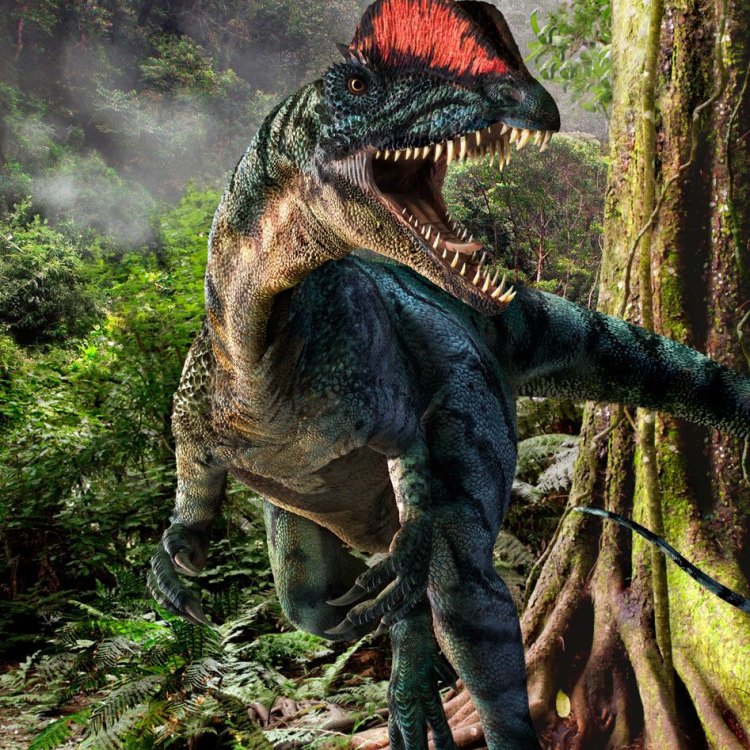
Dilophosaurus
- Adult Size: Large
- Average Lifespan: Unknown
- Reproduction: Sexual
- Reproductive Behavior: Unknown
- Sound or Call: Unknown
- Migration Pattern: Non-migratory
- Social Groups: Unknown
- Behavior: Likely hunts in groups, agile predator
- Threats: Extinct
- Conservation Status: Extinct
- Impact on Ecosystem: Unknown
- Human Use: Fossil specimen, scientific research
- Distinctive Features: Dual crest on the head
- Interesting Facts: Dilophosaurus is known from incomplete fossil remains, and its appearance and behavior are still a subject of scientific study.
- Predator: Unknown
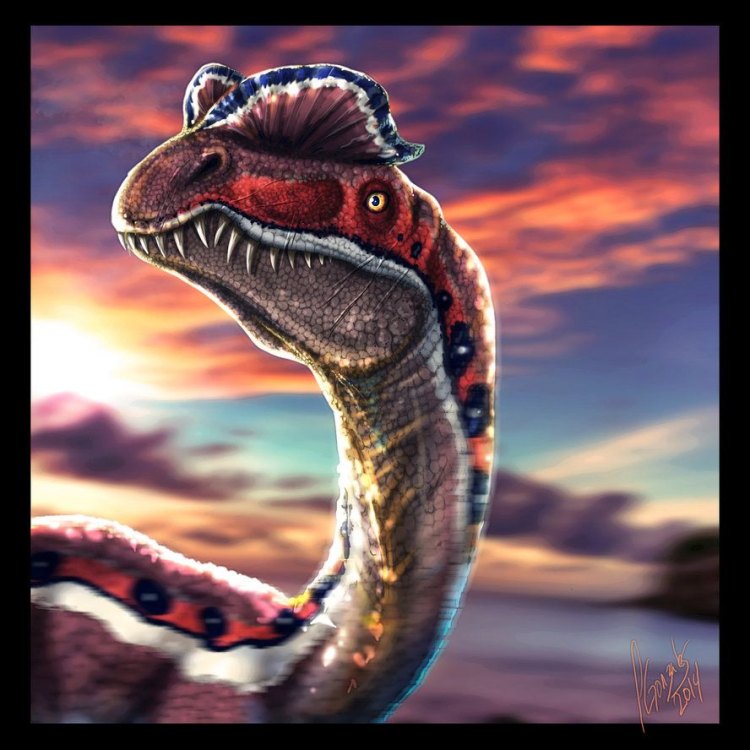
Dilophosaurus
The Mysterious Dilophosaurus: A Predator of the Past
As we journey through the depths of prehistory, we come across a fascinating creature that roamed the Earth over 190 million years ago. It is none other than the Dilophosaurus – a large, fierce predator that captivates our imagination and sends shivers down our spine.With its distinctive dual crest on its head, the Dilophosaurus has been an enigma for paleontologists and researchers for many years. This mysterious dinosaur has left behind incomplete fossil remains, which have led to various debates and studies about its appearance and behavior PeaceOfAnimals.Com. Today, we delve into the world of the Dilophosaurus and explore its unique features, behavior, and role in the ecosystem.
A Tale of Size and Life
The Dilophosaurus was a formidable and majestic creature, with an adult size reaching up to 20 feet in length and weighing around 1,000 pounds. It was a large predator that roamed the ancient forests of North America during the Early Jurassic period. Its name translates to "double-crested lizard," which is derived from the two distinct bony crests on its head.While the size of the Dilophosaurus is well-known, its average lifespan remains a mystery. It is believed that this dinosaur lived for several decades, similar to other large predators of its time. However, without sufficient evidence, its exact lifespan is still unknown.
The Secretive Reproduction Process of the Dilophosaurus
As for its reproductive behavior, little is known about how Dilophosaurus reproduced. It is speculated that they followed a sexual reproduction process, where males and females mated to produce offspring De Brazzas Monkey. However, no fossil evidence has been found to confirm this theory.Scientists also do not have any information on the reproductive behavior of Dilophosaurus. Did they form pairs, or did they lay their eggs in nests like other dinosaurs? These questions remain unanswered, making the Dilophosaurus a mysterious creature of the past.
The Silent Hunter: Dilophosaurus' Call and Social Behavior
One of the most elusive aspects of the Dilophosaurus is its sound or call. It is unknown if this dinosaur made any vocalizations or sounds, which makes it difficult to imagine how it communicated with others of its kind.Furthermore, the social behavior of Dilophosaurus remains a mystery. Did they hunt in groups or were they solitary creatures? With limited fossil evidence, it is challenging to decipher this information. However, based on its agile and swift movements, paleontologists believe that Dilophosaurus may have hunted in groups to take down larger prey.
A Fashion Statement: The Dual Crest on the Dilophosaurus' Head
One of the most distinctive features of the Dilophosaurus is its dual crest on its head, which gives it a unique appearance. These bony crests are believed to have served a purpose other than making a fashion statement. Some theories suggest that they were used for display purposes, to attract a mate or intimidate rivals.Others argue that these crests were probably used to regulate body temperature or even act as a natural weapon during fights or hunting. While the exact purpose of these crests remains unknown, they definitely make the Dilophosaurus stand out among other dinosaurs of its time.
A Cunning Predator of the Past
With its sharp teeth and strong jaw muscles, the Dilophosaurus was a fierce predator of the ancient world. Its diet is believed to have consisted mainly of small to medium-sized herbivorous dinosaurs and other small prey such as lizards and insects. Its dual crests may have also aided in taking down larger prey, making it a formidable hunter.Despite its size, the Dilophosaurus was an agile predator, with long hindlimbs and a lightweight body. This allowed it to move swiftly and catch its prey with ease. Its sharp claws and strong legs also helped it to take down prey and defend itself against other predators.
Threats and Conservation Status
Sadly, the Dilophosaurus no longer roams the earth, and its presence is only seen in fossils and scientific research. This prehistoric creature became extinct millions of years ago, along with many other dinosaurs. The cause of its extinction is still debated, with theories including climate change and competition with other predators.Due to its extinction, the Dilophosaurus has a conservation status of "extinct." However, its fossil specimens offer valuable information about dinosaur life and evolution, making it an important subject of scientific research.
The Dilophosaurus' Impact on the Ecosystem
With limited information on its interaction with other species, it is difficult to determine the exact impact of the Dilophosaurus on the ecosystem. However, as a top predator, it is believed to have played a crucial role in maintaining balance within its ecosystem. Its extinction has also had an impact on the ecosystem, leading to changes in the food chain and other ecological changes.Fascinating Facts about the Dilophosaurus
Apart from its distinctive features and mysterious behavior, the Dilophosaurus has left us with some interesting facts that continue to intrigue scientists and dinosaur enthusiasts. For instance, its fossil remains were first discovered in Arizona in the 1940s, but it wasn't until 1964 that it was officially named.Furthermore, its appearance in the movie "Jurassic Park" has also sparked much debate and curiosity about its actual appearance and behavior. The Dilophosaurus depicted in the film was significantly smaller than its real-life counterpart and had a more fictional venom-spitting ability, which is not scientifically proven.
Conclusion
In the vast world of dinosaurs, the Dilophosaurus stands out as a unique and mysterious creature. With its large size, distinctive features, and elusive behavior, it continues to fascinate researchers, paleontologists, and the general public. While there is still much to learn about this prehistoric predator, its fossil remains serve as a valuable source of knowledge and insight on the world of dinosaurs. From its dual crest to its swift movements, the Dilophosaurus will always hold a special place in our fascination with the creatures of the past.

The Fascinating Dilophosaurus: A Predator of the Jurassic Era
Disclaimer: The content provided is for informational purposes only. We cannot guarantee the accuracy of the information on this page 100%. All information provided here may change without prior notice.

